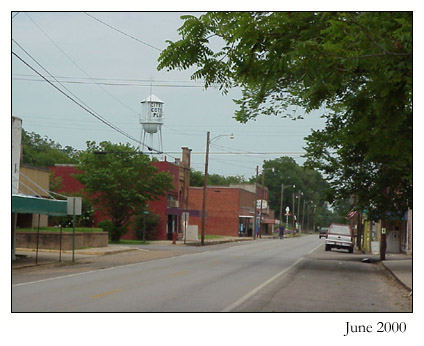

|
From the article "Cotton Plant Fire Department" by Lonnie Craffod in Rivers and Roads and Points in Between, Vol. III, No. 4 (Fall, 1975), p. 26: |
|
Three devastating fires nearly wiped out Cotton Plant's Main Street before there was an organized Volunteer Fire Department. The first of these was in 1901 when most of the buildings in the business part of town were light frame and elevated board walks ran the length of the street. After the fire, the old frame buildings were replaced with brick structures, many of which are still standing In 1917 or 1918 was the largest and most destructive fire that Cotton Plant has known. It was on the south side of Main Street and burned almost everything east of the present Sol Nathan Store, and down the side street where the Shelby Crafford store is now located. Several two story buildings were destroyed in this fire, including the old Moore Hotel, and a bank building. Fire took its toll on the north side of Main Street in 1925. According to the report in the Augusta Advocate, Nov. 26, 1925, the fire occurred on the night of November 18th and destroyed five brick buildings, one of them two-story, and caused a loss of more than $100,000 to the merchants. The newspaper reports that the post office fixtures were destroyed, but that the mail was saved by the postmaster, F. G. Kennedy, and his assistants. Salt was used to finally quench the flames. The barber shop was covered with lots of salt, and when the building collapsed the salt put out the fire. This was before the day of the fire siren and the fire truck. A gun shot sometimes alerted the townspeople that something was on fire, or the Veneer Mill would sound the alarm by blowing its whistle. There was no fire truck, and volunteer bucket brigades fought the flames as best they could...
|
|
A modern water and sewage system for the town was built in 1935 by the WPA and was celebrated by a day of speeches, picnics, parades, and fireworks. See "Cotton Plant's First Real Water and Sewer System" by Mrs. Dale McGregor can be found in Rivers and Roads and Points in Between, Vol. IX, No. 3 (Summer, 1981), p. 2-5.
A history of "The Cotton Plant Fargo Railroad" by Mrs. Dale McGregor can be found in Rivers and Roads and Points in Between, Vol. X, No. 4 (Fall, 1982), p. 22-25. The Cotton Plant Fargo Railroad was the last operating section of the old Missouri and North Arkansas Railroad (M&NA). The CP-F was established in 1949 and abandoned in 1977.
A listing of Cotton Plant businesses existing in 1905 was reconstructed from interviews and two extant issues of the local newspaper, The Hustler by Mrs. Dale McGregor in "Stepping on Cotton Plant History," Rivers and Roads and Points in Between, Vol. V, No. 2 (Spring, 1977), p. 9.
The McGregor family had an important role in the history of Cotton Plant and A Little McGregor Family History can be found here. This article was also written by Dale McGregor who had contributed many articles about the history of Cotton Plant as well as being the first editor of Rivers and Roads and Points in Between.
|
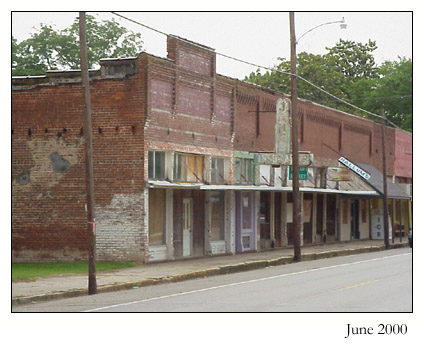 |
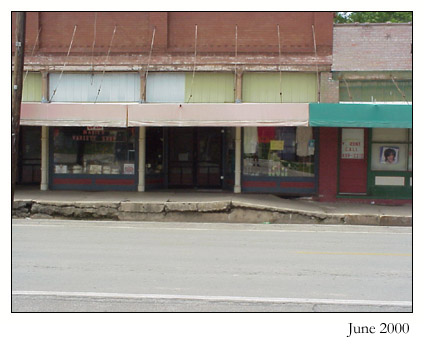 |
|
Arkansas State Gazetteer and Business Directory, Volume II, 1888-9 (St. Louis, MO: R. L. Polk & Co. copied in Rivers and Roads and Points in Between, Vol. X, No. 4 (Fall, 1982), p. 27: |
|
COTTON PLANT. A post village on the Batesville and Brinkley Railroad in Woodruff County, 76 miles northeast of Little Rock and 30 miles south of Augusta, the county seat. Settled in 1856, it contains a steam grist mill and a cotton gin, and ships cotton. Population, 450. Mail, daily. W. T. Echols, postmaster. Bison Bros. and Co., general store; Cohen, Ike, general store; Carter, A. C., general store; Cotton Plant Supply Co., general store; Haley, P. H., cotton gin; Henderson, Echols and Co., general store; Henry, T. C., blacksmith; Hobgood, J. F., railroad and express agent; Jacobs, F., general store; James Bros., general store; James, R. R., physician; Jones and Belky, grocer; McGinis, Gus, grist mill; McGregor, R. P., cotton gin; Maberry, A. F., lawyer; Mathis, W. J., physician; Mehan, Charles, livery and sale stable; Neely, J. W., livery and sale stable and constable; Pennelt, J. W., dry goods; Rehoe, J. L., blacksmith; Russell, J. W., dry goods; Salinger, A., general store; Salinger, S., dry goods; Spivy, W. R., grocer; Thomas, Monroe, baker; True, W. T., lawyer; Westmoreland, J. W., physician; Westmoreland, R. N., grocer; Whitfield, D. J., hotel.
|
|
|
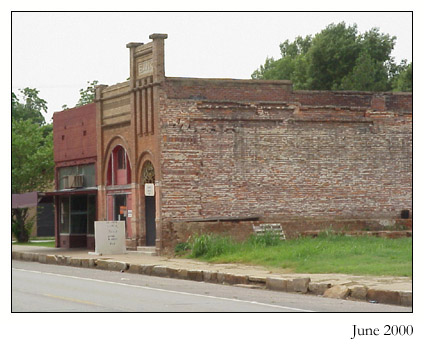 |
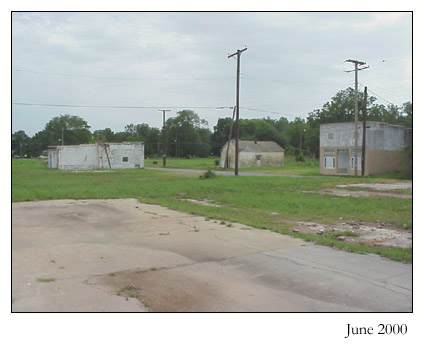 |
|
Cotton Plant has also been the home of a significant and vital black community as well. Among one of the more well-known members of that community, was the highly-influential gospel singer known as Sister Rosetta Tharpe (1915-1973) who was born there. Her mother, Katie Bell Nubin (a. k. a. Ma Bell), a mandolin player, was also an active musician on the evengelical circuit (and later played with Dizzy Gillespie's band). Rosetta's popularity as a gospel singer was only surpassed by Mahalia Jackson's. She was also notoriously known for her secular music as well (often getting in touble with gospel music fans). She performed a hybrid synthesis of black spirituals, hillbilly, and boogie woogie backed by popular big jazz bands of the thirties and forties. She was an early performer of the electric guitar which she played from the hip. Her flamboyant stage presence, outlandish clothes, and dyed flame-red hair, was a precursor of things to come, and as such she had a significant influence on early white rockers such as Elvis Presley and Jerry Lee Lewis. Many compiliations of her recordings are available, and many websites exist in appreciation of her talent and style. A significant biography also now exists about her, Shout, Sister, Shout!: The Untold Story of Rock-And-Roll Trailblazer Sister Rosetta Tharpe, by Gayle F. Wald, (Beacon Press, Boston, MA: 02/01/2007 -- thanks to Kimberli Rice, for bringing this to my attention). Also, the 27th season of the PBS series American Masters, was launched with "Sister Rosetta Tharpe: The Godmother of Rock & Roll" in February of 2013 which contained many rare items about her life. During my short visit to Cotton Plant in 2000, I was unable to locate the site of her home and I do not know if there is any kind of marker or monument to the fact that she had lived there. Certainly such recognition is due if it does not already exist. |
![]()
This page created on 08/25/2000 13:27. Updated 06/19/2013 21:12.